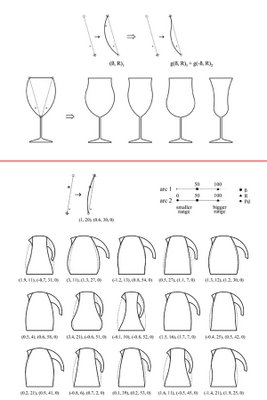It took me a couple of goes to read this through and understand it, so I’m going to pretty much replicate the complete press release verbatim:
Researchers from The Open University and the University of Leeds have been awarded 195,000 GBP from the Leverhulme Trust to develop an intuitive computer aided design (CAD) system that could revolutionise the design process. They will examine how eye tracking technology could recognise which parts of design sketches the designer is interested in, and automatically suggest developments of that element.
Dr Steve Garner, Principal Investigator and Senior Lecturer in Design at The Open University, said: “Our starting point was thinking about what type of computer systems designers will be using in 15 or 20 years’ time. We believe that in the future, CAD systems will work alongside designers to stimulate and enhance their creativity by offering suggestions and highlighting alternative options right from the earliest point in the design process, when they’re sketching out their ideas.”
The research builds on a prototype CAD system funded through the Designing for the 21st Century programme, a joint initiative between the Arts and Humanities Research Council and the Engineering and Physical Sciences Research Council. The Design Synthesis and Shape Generation project (DSSG) produced the world’s first 3D shape grammar-based design system, which succeeded in overcoming a major limitation in current shape grammar-based systems – that of recognising ’sub-shapes’ in early design sketches.
Alison McKay, Professor of Design Systems at the University of Leeds, explains: “Sub-shapes or emergent shapes are those created when two or more shapes intersect. For example, if two squares overlap diagonally, we see a third square created in the middle. But in conventional CAD terms, this middle square doesn’t exist, because it has not been previously defined in the programming and is therefore ignored by the CAD system for design purposes. But in real life, designers use such ambiguities within their sketches to inspire further design developments using their creativity and experience and we succeeded in developing a system that could assist that process from the start.“
The new project takes the DSSG software a radical step further by adding eye tracking capability into the mix. It’s a step that could ultimately see the designer and software working in complete creative harmony.
“When we’re interested in something or when part of a picture catches our eye, our eyes are naturally drawn back to that part several times over. The eye tracking device could detect this interest and intuitively make suggestions to inspire the design development without the designer having to interrupt his or her train of thought to instruct the computer to work on a certain part,” Professor McKay continued.
“The designer wouldn’t have to physically interact with the software – the software would already be in tune, ready to support the creative process by suggesting new ways of seeing the possibilities a shape can offer.“
I’ll be perfectly honest with you, I’ve read it again now, I’ve got a nagging feeling in the back of my head that there’s an application for this screaming out at me. but I’m buggered if I can think of what it might be. Anybody got any ideas?
Exploring the DSSG web-site further, I stumbled across this:
Now that makes much more sense. I think. Help?







